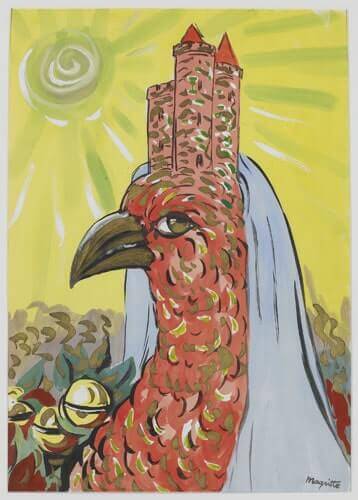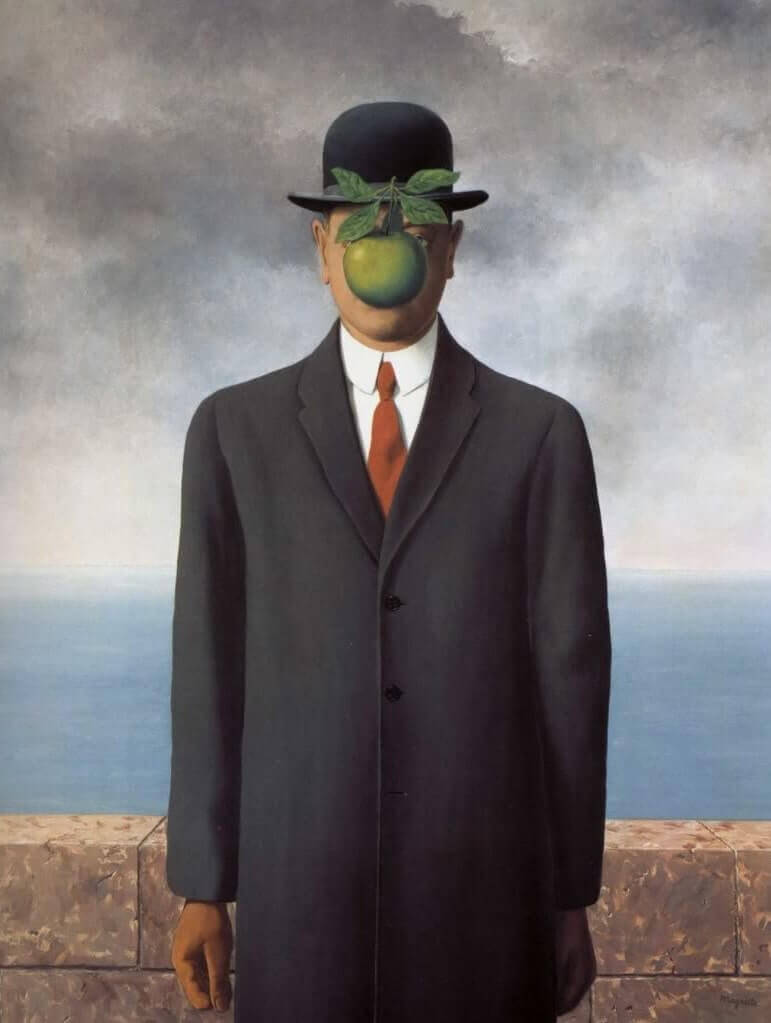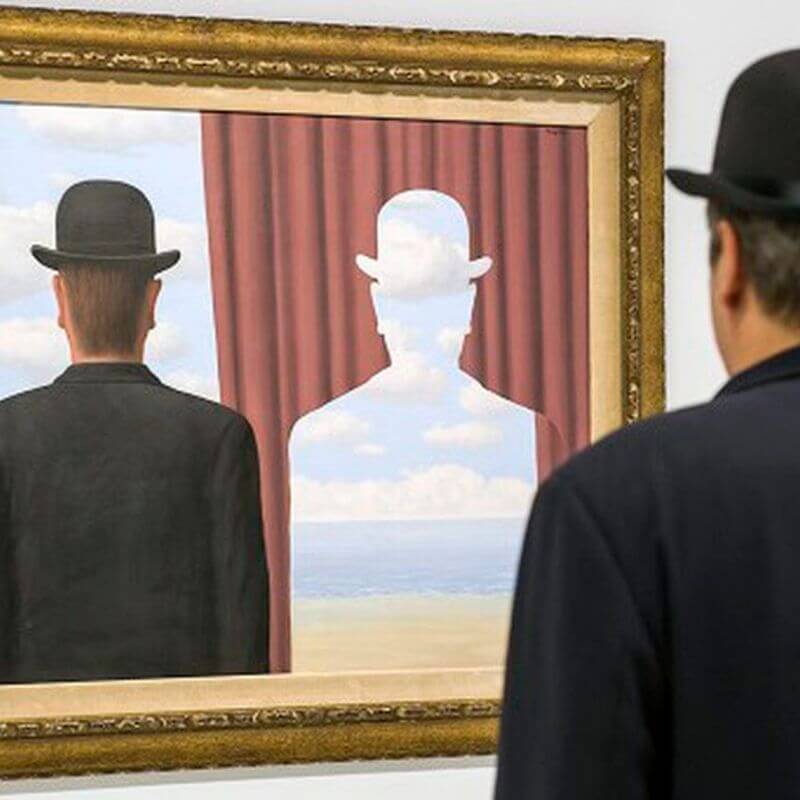Worldwide shipping 🌍
MAGRITTE: A BELGIAN SURREALIST AND SOLAR PAINTER
Brief genesis of the artist
During his childhood, René Magritte had to face an emotional catastrophe when his mother committed suicide.
A succession of governesses took charge of his education. Very early on, the young man was seduced by the impressionist style. He enrolled at the Royal Academy of Fine Arts in Brussels. He then joined the studio of a certain Pierre-Louis Flouquet (1900-1967). He was a Belgian painter and poet who was sensitive to the abstract. He introduced René Magritte to futurism and cubism. In 1924, the young man expressed his interest in Dadaism during a first brief stay in Paris.
THE PARISIAN STAY: MAGRITTE SEDUCED BY SURREALISM
In 1927, René Magritte met the Parisian surrealists such as Paul Eluard, Salvador Dali and André Breton.
This cultural elite stimulated him. He exhibited some of his work in a gallery. For two years, he fit in perfectly with the Parisian Surrealists. However, politics and religion gradually widened the gap between this group of artists and the Belgian artist.
The economic crisis of 1929 forced the painter and his wife to return to Brussels.
This cultural elite stimulated him. He exhibited some of his work in a gallery. For two years, he fit in perfectly with the Parisian Surrealists. However, politics and religion gradually widened the gap between this group of artists and the Belgian artist.
The economic crisis of 1929 forced the painter and his wife to return to Brussels.
Magritte's Renoir period
René Magritte went through an impressionist period that was nicknamed "Renoir", after the master. In the early 1940s, the artist experienced artistic enthusiasm despite the raging war. He wrote these magnificent words to Paul Eluard in 1941: "(...) the beautiful side of life would be the field I would explore. By that I mean all the traditional paraphernalia of charming things, women, flowers, birds, trees, the atmosphere of happiness. (...) it is a rather powerful charm that now replaces in my paintings the disturbing poetry that I had once striven to achieve. Magritte's enthusiasm seems flamboyant.
This is fully apparent in his work, which he describes as an explosion of light. From 1946 onwards, the Belgian painter defined his artistic production as 'Surrealism in the sunlight'. Some fifty paintings were produced in this sunny style until 1948, including Treasure Island, Dream, Intelligence and Lyricism.
MAGRITTE: THE POST-WAR AND COW PERIOD
The cow period: René Magritte wants to shake up Paris
In 1948, René Magritte produced a series of works in a crude style. The paintings depict grotesque-looking characters. This was an opportunity for the Belgian artist to exhibit his paintings in Paris. He hoped to shock the Parisians and particularly the French surrealists.
The paintings from this cow period comprise some forty canvases and gouaches. Among these works are: La Vie des Insectes, Le Mal de Mer, L'Arc-en-Ciel and Le Prince Charmant. Magritte succeeded in his wager: he shocked Paris, including Paul Eluard.
Magritte - Prince Charming!

MAGRITTE AND THE MYSTERY OF THE APPLE
Several of the painter's works depict apples. Among them is The Son of Man (1964).
We will come back to this Magritte apple painting later. The apple is an opportunity to arouse mystery, as the artist's words in one of his writings attest: "All things cannot exist without their mystery. It is the nature of the mind to know that there is mystery. (...) An apple, for example, raises questions.
Faced with the apple that hides the man's face in the Magritte painting we discuss below, the viewer is frustrated. He does not know who is behind the fruit. The mystery is complete.
The Magritte painting entitled This is not an apple (1964) is just as mysterious.
What does the Belgian artist mean when he paints a beautiful apple with the words: 'This is not an apple'? Yes, this painting does not feature a real apple but only its image. Or is there a biblical connection: This is not an apple but the fruit of knowledge that condemned humanity to exile from the Garden of Eden. A total mystery!
At the end of his life, René Magritte seemed to be obsessed with apples, as in 1967 he painted another canvas called The Masked Apples. Two green apples are depicted with masks. Magritte and apples, a mystery to crunch with your eyes!
We will come back to this Magritte apple painting later. The apple is an opportunity to arouse mystery, as the artist's words in one of his writings attest: "All things cannot exist without their mystery. It is the nature of the mind to know that there is mystery. (...) An apple, for example, raises questions.
Faced with the apple that hides the man's face in the Magritte painting we discuss below, the viewer is frustrated. He does not know who is behind the fruit. The mystery is complete.
The Magritte painting entitled This is not an apple (1964) is just as mysterious.
What does the Belgian artist mean when he paints a beautiful apple with the words: 'This is not an apple'? Yes, this painting does not feature a real apple but only its image. Or is there a biblical connection: This is not an apple but the fruit of knowledge that condemned humanity to exile from the Garden of Eden. A total mystery!
At the end of his life, René Magritte seemed to be obsessed with apples, as in 1967 he painted another canvas called The Masked Apples. Two green apples are depicted with masks. Magritte and apples, a mystery to crunch with your eyes!
FOCUS ON TWO artWORKS BY MAGRITTE
1- the son of man
The Son of Man is a Magritte painting from 1964. The Belgian painter depicts a man standing in front of a wall.
Behind him is a seascape. He has a green apple in front of his face. We can only see the left eye of the man wearing a black jacket and a bowler hat. According to some interpretations, this Magritte painting is a self-portrait of the artist, as suggested by a photograph of Bill Brandt showing him in a black suit and bowler hat carrying the man's son in front of him.
The mystery is total. Moreover, does the apple not refer to the fruit of the Garden of Eden which caused the fall of humanity? It is logical to ask this question knowing that this Magritte painting has a second biblical reference. "The Son of Man" is a redundant expression in the New Testament to designate Christ. In Christian theology, Christ is God made man to save humanity from original sin.

2- The Lovers
This Magritte painting is surrealist in style. It represents a couple kissing on the lips.
The faces of the two lovers are covered by veils. It was painted by the artist in 1928 and is currently on display at the Museum of Modern Art in New York. Les Amants is a Magritte painting that consists of four artworks, numbered I to IV.
Les Amants II shows the same couple holding hands but not kissing. Their faces are always covered by a veil. In Lovers III and IV, the couple's faces are uncovered but the man no longer has a body. His head is floating.
THE MAGRITTE MUSEUM IN BRUSSELS
A section of the Royal Museums of Fine Arts of Belgium has been dedicated to René Magritte. In the Hôtel du Lotto, visitors can discover the rich paintings of the Magritte Museum. It is the world's richest collection of artworks by the Belgian painter.
Three floors offer a chronological tour of his artwork.
Three floors offer a chronological tour of his artwork.
The old house transformed into the Magritte Museum
Since 1999, a Magritte museum has been open in Jette, Belgium. It is housed in the house he lived in with his wife Georgette between 1930 and 1954. It was in this house that the artist painted most of his artwork.
The painter's living room is preserved in its original state. His studio in the garden and the dining room are two other very emblematic places in this building. In Magritte's artworks we find many elements contained in the house: fireplace, door handles, aviary, etc. A biographical exhibition of the artist is presented on the first floor.
Visitors can admire drawings and watercolours by the Belgian painter as well as a collection of personal objects.







